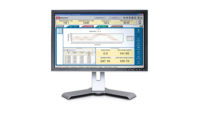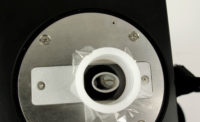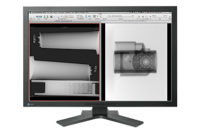Medical devices have always been a challenging field in which to develop testing standards. The industry struggles to develop predictive methods to determine safety and efficacy due to the variability in how these products are applied by the end user, the variability of patients, and the variability of the condition they are treating. The introduction of new technologies, such as biodegradable materials, cell therapy, or combination devices, exponentially increases the inherent variability and the difficulty of the challenge. But the standards community is facing the challenge head on by developing working groups comprised of industry, research, clinic, and patients to comprehensively evaluate how these new technologies affect current and future standards.
Existing Medical Device Test Standard Evolution—Cardiovascular Stents
Traditional fatigue testing of complete stent devices is addressed by ASTM F2477 “Standard Test Methods for in vitro Pulsatile Durability Testing of Vascular Stents,” which specifies methods for fatigue of complete devices through hydrodynamic pulsation. The method involves placing complete devices into mock arteries and subjecting them to 400 million cycles of internal pressure pulsation, forcing them to radially expand and contract in each cycle. The test can either be performed between pressure limits, simulating diastolic and systolic pressures, or displacement controlled, reproducing the minimum and maximum diameters that a stent would see in vivo under worse case conditions. Tests are typically performed at frequencies of up to 50 cycles per second, resulting in test durations of over three months, more typically at six months.
TECH TIPSConsensus is often difficult to reach while reviewing complex medical devices. The average medical device standard development and release timeline is many years. ASTM and other regulatory bodies are working on the common goal of developing test standards for successful medical devices. |
The acceptance criterion of devices is a simple pass/fail one, in that no fracture of the stent can occur during these in vitro tests for success. Many devices from varying manufacturers have undergone Pre-Market Approval (PMA) by the Food and Drug Administration (FDA) and have gone into clinical use. Although this traditional “Test to Success” approach of fatigue testing has not resulted in failures, the reality is that many of these devices are fracturing in vivo.
In early 2006, the FDA and ASTM started looking at ways that could eventually improve the current durability assessment of cardiovascular devices. Initially, two working groups under the ASTM F04.30.06 Endovascular Devices Task Group were established; the first group concentrated on better understanding of the physiological conditions devices undergo in vivo and transferring this knowledge into boundary conditions for use in testing, evaluation and modelling, whereas the second group, entitled “Fatigue to Fracture” (FtF) group, was charged with developing alternative and improved test methods for fatigue testing of cardiovascular devices.
In the past eight years, the FtF group has completed a mountain of research, but made very little progress with regards to a new standard. In a presentation to the FDA in February 2008, M.R. Mitchell—a member of the task group and employee of Mechanics & Material Consulting in Flagstaff, AZ—presented a strain-life predictive method adopted in the 1950s by the ground and aerospace vehicle industries. This approach considered the duty cycle of the device as determined through detailed strain-life prediction with a damage accumulation model. The idea was to use the cyclic and fatigue data available on many commonly used materials as benchmark data to plan the test. Strain-life technology has not extensively been utilized to evaluate stent durability and could be the key to developing the next standard. The group continued to research the method and gain insight from industry experts; unfortunately a conclusion has yet to be identified. As of July 9, 2014, this standard is still listed as “active” on the ASTM website.
New Technology—Biodegradable Medical Devices
Biodegradable medical devices are being targeted as the next hot thing. The intent is that the device would only last in the human body for a few months and then dissolve without surgery and without leaving any long-term side effects, leaving behind a healthy/healed functioning tissue. The medical benefit provided by the dissolution makes product development and subsequent safety and efficacy testing a challenge. Traditional fatigue testing methods are not applicable. Biodegradable materials are not suited for accelerated fatigue testing or ultimate strength. A new method and standard must be researched and developed in parallel with this new technology.
Dr. Yun at North Carolina A&T believes that “Various physiological factors related to the corrosion of biodegradable metal medical devices should be taken into consideration to obtain similar results at in vivo when in vitro test is conducted. Because complex environments in the human body such as various physiological salts, flow and diffusion kinetics, proteins absorption and active tissue formation affect the biodegradation process and formation of corrosion products for biodegradable metal implants. In vivo experiments (animal testing) can unfortunately lead to major ethical concerns, costs and limited experimental capacity. Thus, we keenly feel that a new design of elaborate and complicated test-bed should be developed on the basis of massive data acquired from previous tests to reduce the gap of corrosion behavior between in vitro and in vivo test.”
So the need is confirmed, but where and how should ASTM or ISO governance bodies initiate this great new test design? In May 2014, Dr. Yun headed up a working group to discuss this very question.
The question is always where to start. The end goal is defined by the meeting, to develop a standards document that provides requirements, specifications, guidelines or characteristics that can be used consistently to ensure that materials, products, processes and services are fit for their purpose, to ensure that products and services are safe, reliable, and good quality.
Step 1: Identify the Product: TEMPs—or Tissue Engineered Medical Products—are a new world for regulatory bodies, such as ASTM. They represent new technology, new applications, and even a new language. Before the ASTM working group could begin a useful conversation they needed to speak the same language. This problem was addressed in 2011 when a standard terminology document was released (F2312-11). Next, they needed to focus on a specific TEMP product using a classification scheme developed for TEMPs in 2013 (F2211-13). These classifications were developed according to product components, site of action, therapeutic target, therapeutic effect, mode of action, duration of therapy, and lifetime and were designed to assist subcommittees with determining the number and types of tests that need are required to demonstrate product safety and efficacy. This document outlines considerations such as component testing, characterization testing, including imaging, mechanical characterization, biochemical characterization, gene expression profiling, biologic and chemical interactions, time varying properties, delivery systems, microbiological safety and adventitious agents, and clinical trials .
Step 2: Develop a Test Method: The subcommittee now has a menu of options for which they need to develop a test method and appropriate assessment criteria. Each test method and matching assessment criteria can then be handled by a separate working group of experts. This is where we pick up with Dr. Yun’s story. His assembled group of experts including industry (product) representatives, test instrumentation experts, and research (NCAT) experts focused on the scope of existing absorbable metal test standards and related shortcomings of these standards so as to provide a baseline for further conversation. Together the group will try and determine which existing methods can be re-used, what new bench top methods will be predictive of clinical safety and efficacy, what equipment will be used to perform these test methods, what kind of data must be collected, how it should be analyzed and much more.
To date, the committee has completed the first draft of the guide focusing mainly on the chemical, microstructural, physical, and mechanical properties of the material to determine uniformity and quality. The committee has determined that the material focus will be on magnesium base, iron base, and zinc base alloys, as these are the main metallic materials documented in literature as appropriate and successful in absorbable implant applications.
The draft will be reviewed by industry experts, appropriate revisions will be made and the ASTM F04 committee will gather again in November 2014 to review their progress.
How long will it take for ASTM to release a new official standard? The ASTM published response to: How long does it take to develop an ASTM standard? is “Depending on a committee’s commitment to timely development and approval, standards can take as little as six months to become full consensus standards.”
Unfortunately, consensus is difficult to reach while reviewing complex medical devices. The average medical device standard development and release timeline is many years.
Despite the challenges, all parties recognize the importance of developing test standards and providing the best medical device solutions possible. ASTM and other regulatory bodies are counting on this common goal to continue to inspire innovation and participation in the test community.






